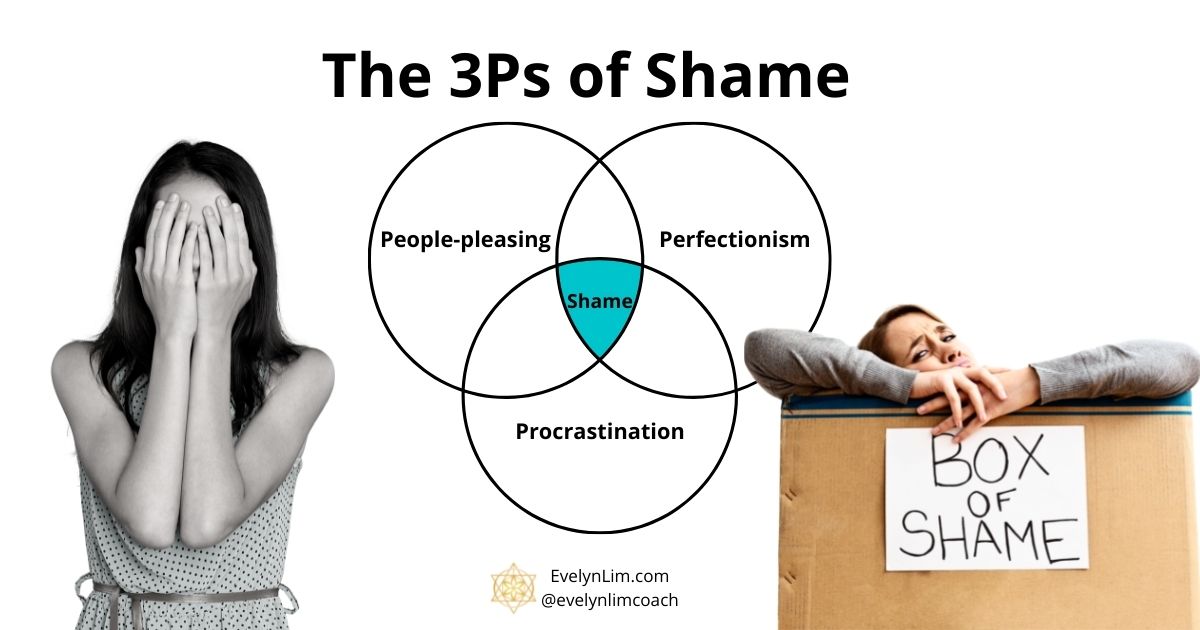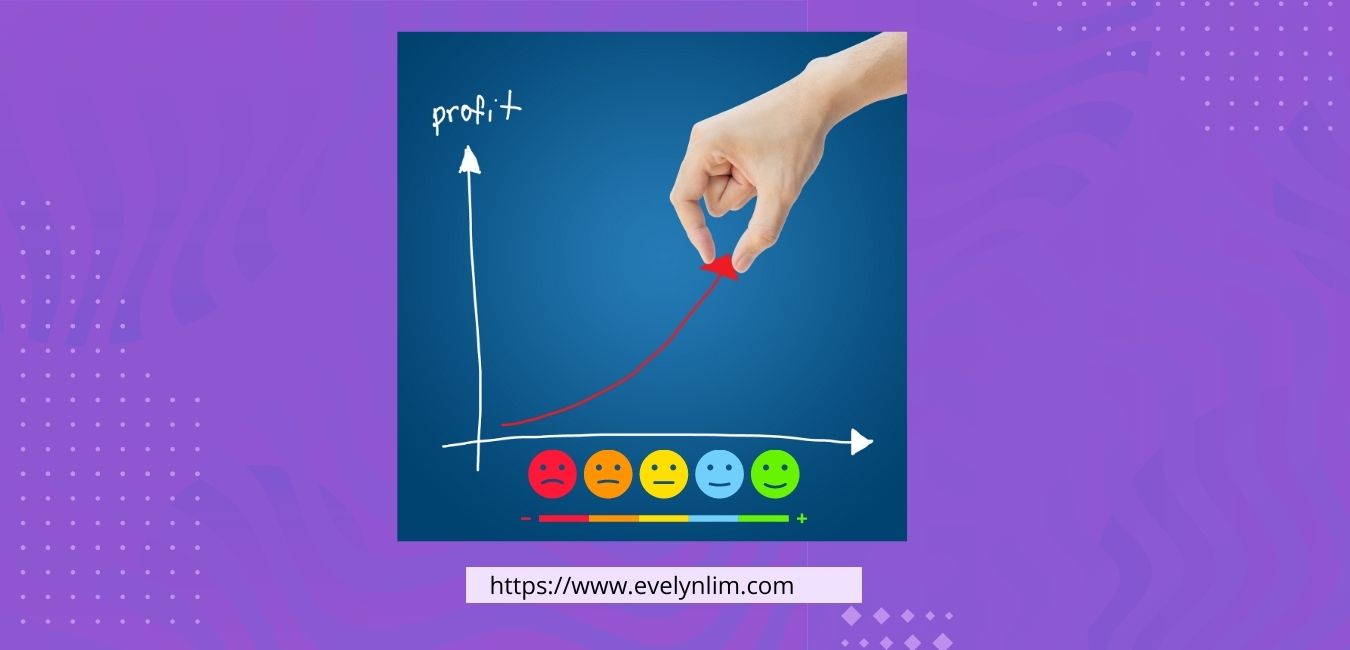Category Archives for "Self Mastery"
Master yourself to manifest abundance
Master yourself to manifest abundance
Tend to have a lack mentality?
Does your mind focus on scarcity and “not having enough”?
It’s possible to be focused on the lack and have poverty consciousness even if you have money in the bank and it doesn’t make logical sense to be counting the pennies.
This can happen if your reptilian brain or nervous system is activated in fight-flight-freeze mode and due to past conditioning.
If so, I’d like to invite you to work on letting go of the conditioning.
Tap along with me, so that you can let go of a lack mentality and align with abundance consciousness.
Let me know how the tapping session went for you.
Love and Abundance Always,
Evelyn Lim
Certified EFT & Matrix Reimprinting Practitioner
P.S. Join My Group Tapping Circle here if you’d like to work on your specific issues.

Vulnerability hangover is the regret, anxiety and shame that you feel after having exposed vulnerable parts about yourself to others.
Enough was enough, you had said. You decided that you were quite done with hiding. And so, even as your heart raced, you proceeded with boldly sharing something vulnerable about yourself. With a trembling voice, you went through your story. You shared it from deep within your heart.
The moment you let it out, you heaved a sigh of relief. The burden of keeping it all in was lifted. It was also when you gave yourself a pat on the back for your courage and congratulated yourself for being more authentic and daring greatly.
But wait a minute!!! As the dust settled, you began to compute what you’ve just done. Filled with regret, you started to shame yourself for such a stupid move. Feeling vulnerable about being vulnerable hit you in waves of nausea. You became sick to the stomach over the thought that others might ridicule you or reject you.
Well, in case you don’t know what had just taken place, there is one apt phrase that describes the phenomena: Vulnerability Hangover.
Continue reading
Update: I continue to get the same question on how to create a personal energy shield for protection, even though I posted the answer in this article (read below) years ago. Well, I have decided to update it with a Bonus Energy Shield tip#5 and a video.
Why is it important to create a personal energy shield for protection? You’d want to create one if you find yourself constantly drained or have the tendency to be sensitive to energy interferences.
I was prompted to write this article after posting 70 Ways for Self Care. In response to tip #57, Lei – a reader to the article – had asked in the blog comments how she could create one as she has found herself surrounded by toxic people. Well,, I’d like to respond to her question in two parts; one specifically on how to create a personal energy shield for protection and the other, on how to handle toxic relationships in another article.

The 3Ps of Shame can be found in People-pleasing, Perfectionism and Procrastination.

People-pleasing – refers to seeking approval from others and pleasing others in their needs and wants and often at the sacrifice of our own.
Perfectionism – the need to be perfect in the way we are, do or have and the refusal to accept flaws, imperfection or mistakes.
Procrastination – refers to the constant postponement of activities & employing distraction tactics, so that we can hide from our shame.

I’ve enjoyed reading Reconciliation: Healing the Inner Child by Zen Master Thich Nhat Hanh and thought I’d honour his recent passing by sharing what I’ve learnt about applying mindfulness for healing the inner child.
“The energy of mindfulness is the salve that will recognize and heal the child within.” Thich Nhat Hanh
In Buddhist psychology, there are two parts to consciousness, the mind consciousness and the store consciousness. Mind consciousness is our active awareness for everyday living while store consciousness is often referred to as the “unconscious mind” where our past experiences are stored. In some situations, we go through life without engaging our mind consciousness. For example, when we drive without actively thinking, we are using our store consciousness.

This means that loving ourselves is not a mere one-time or a short-term exercise; whether we are going for a therapy session, a singing bowl meditation to heal our heart chakra or buying ourselves a branded bag so that we can feel better.
Self-love is much more than any of these.
Some of us may have the expectation that self-love can happen magically overnight. The truth is that for those of us with trouble loving and accepting themselves unconditionally, it takes consistent work. It’s certainly been my experience.
Over the years, life would throw me a new challenge again and again and due to being triggered, I’d find myself reverting to the same pattern of feeling unlovable and unloved. At first, I felt disappointed and bitter that none of the healing I did appear to have worked. It would seem that doing inner work was pointless.
Yet, upon review, I realised that my early efforts were sporadic to begin with. Eventually, after seeing how I was caught in repeated patterns, I began to realise that self-love is not going to be an overnight or a one-time healing thing. It finally occurred to me that if I am interested to have enough of a breakthrough, I need to regard self-love as being more of a practice.

EFT tapping for inner child healing involves using our fingertips to tap on specific meridian points on the face and body for addressing childhood wounds. As our physical reactions today could be tied to issues that stem from childhood, applying EFT is effective because unhealed emotions can get trapped and the body keeps the score. Even though the past is long gone, it is possible to heal in the now by applying tapping.
Download this resource page on EFT Tapping for Your Inner Child.
Women often approach me for help to deal with their stress. Their stress can be anything from dealing with a money or work-related challenge, relationship problems, not feeling “good enough”, low self-love to anxiety issues. They would have been holding on to anger, worry, insecurity and frustration for a long time before asking for help. (Understandably, most of us face resistance with getting assistance.)
Some would share about experiencing the same repetitive themes of abandonment and rejection in their lives. Thus, when we get together in a session, we usually begin by patiently peeling off the layers to determine the root cause of their issues. Invariably, we would find out that these issues stem from their past – primarily in childhood. As a result, we are led to working on healing their inner child.

When connecting with our inner child for the first time, we may feel at a loss about what to say or what to do. It’s possible that we feel weird because it is as if we are talking to ourselves. After all, our inner child exists in the mind and no one else can see her (or him) but us. Also, what words can we use to support healing?
According to psychologists, our inner child is described as the hidden part of our personality that is characterised by playfulness, spontaneity, and creativity usually accompanied by anger, hurt, and fear attributable to childhood experiences.
Through our mind’s eye, we connect with our inner self from tracing back to our earliest memory on when we felt the same (negative) way. We get a sense of how old our younger self was and the situation she was in. She may be our 3-year old, 6 year-old or whatever age and she is holding on to hurt, anger, helplessness or any unresolved need. It is when we (our adult self) enter the memory to meet her.
Next, we may encounter the situation of not knowing what to say to her. We have grown in chronological age but we could have left her behind. In fact, I’ve observed how emotional it can be when we do inner child work for the first time. It was that way for me too. The great news is that once we start healing, we gain a sense of well-being like never before.

I was helping a client (let’s call her Nellie, not her real name) clarify the ideal client that she’d like to work with, when we discovered that she was having some limiting money blocks about people who are wealthy.
Nellie’s line of work requires her to service the needs of wealthy individuals or at least people with excess funds. If she releases her subconscious blocks, client attraction can potentially happen with greater ease. It will certainly help Nellie to have more clients as the extra income that she gets can go a long way to supporting her family with two young kids. Since her beliefs could be in the way for client attraction and business sales, we proceeded to work on releasing the limiting money blocks.
When I asked Nellie what some of her discomfort was reminding her of, she recalled two childhood incidents when she was 11 years old that had left her feeling lousy, disgusted and ashamed.
Continue reading
A childhood wound is an emotional pain or a negative belief that a part of us internalised due to a traumatic past event or the relationship we had with our parents or caregivers when we were young.
As I have discovered, unresolved childhood wounds can adversely affect the quality of life in our adult years. Indeed, they have an impact on our personalities, beliefs, career choices, and relationships. We can also be passing on our childhood wounds to the future generations.
Our wounded child is acting up if we often find ourselves in self-sabotage, making poor choices or having over-the-top reactions to triggers. She or he is crying for attention of unhealed emotions. If we choose to ignore our wounded child, we can be stuck for years.